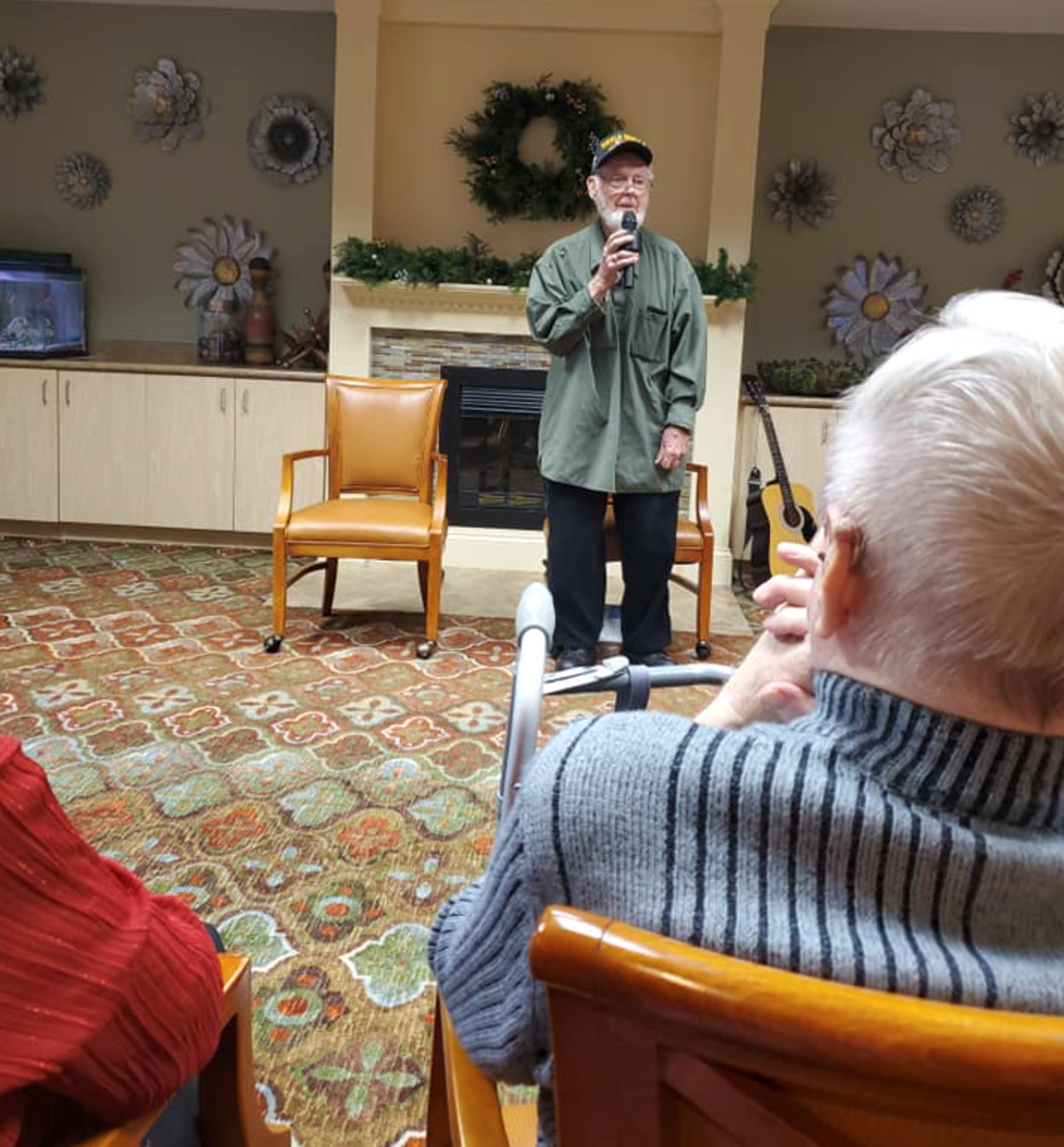- Home
- About
- Benefits & Services
- State Veterans Homes
- Nevada Veterans Memorial Cemeteries
- Community
- News
- Suicide Prevention
- Donate
- Fallen Heroes
- Nevada’s Veterans Memorials
- Calendar/Events
- Nevada Transition Assistance Program (NVTAP)

By Chuck N. Baker
It’s no secret that veterans of the Pearl Harbor conflict are quickly passing away. In some cases, along with the veterans themselves, we are also losing their personal stories. But in some cases, their history is being preserved by family members.
That is the case with Las Vegas resident Kenneth Hill. He and his brother Bert were peripherally involved with Pearl Harbor history.
Kenneth Hill is a WWII veteran who volunteered for the Army in 1942. After training at Camp Lee, Virginia, he was assigned to drive trucks in both the Philippines and New Guinea combat zones. Japanese soldiers occupied the island, “and we were always taking fire from them,” Hill stated.
His brother Bert was a shipwright employed at the Oakland Shipyards. After the Pearl Harbor attack, he was quickly sent to Hawaii to help repair naval ships that were damaged in the bombing but still seaworthy. More than 2,400 American lives were lost in the attack and the U.S. Navy suffered a terrible blow to its Pacific Fleet. Nineteen vessels suffered damage, nearly half of which were sunk or partially sunk. While many ships were damaged beyond repair, others in the fleet were eventually returned to service, even those that suffered extensive damage. Some were returned to service shortly after the attack, others took significantly longer. It was those that Bert Hill was charged to repair, including the USS Nevada. The only battleship to get underway during the attack, she was targeted by Japanese bombers in hopes of blocking the channel’s exit. The Nevada was struck by five bombs with eruptions in the crew’s galley, port director platform, No. 1 turret, and the forecastle. To prevent it from sinking, Nevada was beached as fires spread. She was refloated on February 12, 1942. Bert and his fellow workers completed temporary repairs, and the ship sailed to Puget Sound for full repairs and an overhaul.
After the war, Kenneth Hill was employed as an educator and during the postwar growth of educational television (as compared to commercial entertainment TV), he made recommendations for building a station in Hawaii. The bombing of Pearl Harbor dramatically altered the identity of the island and changed everyday life for the people who lived there. Tourism, one of the islands’ most important industries, came to an immediate halt. According to press reports, since Japanese Americans made up 37 percent of Hawaii’s population, it was impossible for the military to incarcerate all of them. Instead, all residents of Hawaii — white, Native Hawaiian, Japanese, Filipino, Chinese — were forced to live under strict military rule. Hawaii was a U.S. territory at the time and was placed under martial law. Later, such treatment of the residents fueled the case for bringing the islands into statehood. The military continued to maintain a stronghold in Hawaii, with every branch of the military stationed there today. After the war, and after statehood, Hawaii blossomed greatly.
“After the war I was instrumental in getting several educational stations built, including one in Hawaii,” Hill said. He felt such a station serving the islands could go a long way in helping to bring more formal education to the residents. As Hawaii grew in terms of economics and population, the station played a small role in having it become the 50th State in 1959.
Kenneth Hill was recently a featured speaker at The Bridge Assisted Living in Las Vegas, where several veterans reside. One veteran, Leedell W. Neyland, took part in the American landing at Normandy. He was a steward in the U.S. Navy, where he was responsible for taking care of admirals on the USS Broadville. One of his memories illustrates how the United States military has long since changed its views. Always a sharp dresser, he explained that he had a ship’s tailor sew a dashing uniform for him. But the first time he wore it, an officer told him, “You’re colored and you can’t wear that uniform.” Leyland said when he wore the outfit, he “looked better than the officers, and that was the end of that.” It goes without saying that today’s military is diversified and integrated with men and women of numerous backgrounds and all races are welcome and treated equal in the military.
Recent news articles quote retired Navy Admiral Harry Harris, currently the U.S. ambassador to South Korea. He spoke at Pearl Harbor ceremonies last month and explained that it’s difficult to imagine the events of 78 years ago when residents woke up in Hawaii to enjoy another beautiful and peaceful day “in paradise.” As veterans of the attack pass on, one soldier said that in coming years, people will forget the sacrifices made by our nation’s military. He may be correct, but as long as the stories are passed on by families, the history will survive for many generations.